Big or small, own-label or branded, the UK’s food and drink suppliers are struggling to balance cost inflation recovery with volume and share, finds the OC&C 150 report
Inflation, they say, is better for the grocery industry than deflation. The past 18 months have sorely tested that theory.
Despite accusations of profiteering from headline writers and politicians as soaring shelf prices soared, the sheer scale of input inflation has brought unprecedented pressure on those food and drink suppliers feeding the country.
Consumers have seen the results of the wave of 2022 inflation in their shopping baskets, with grocery inflation reaching 17.5% in March and running at around 25% on a two-year basis.
But this has been no cash bonanza for the UK’s food and drink suppliers as t
This year’s Grocer/OC&C Top 150 rankings shows food and drink suppliers walking a tightrope between recovering the vast cost inflation they have been forced to absorb while being restrained enough on pricing to avoid shedding share.
“The last four years have been the most challenging of my 50 years of working, including the three-day week,” says Paul Monk, executive chair of The Compleat Food Group, citing Brexit, covid and most recently cost of living pressures. “Inflation has been incredibly challenging for everyone – consumers, retailers and suppliers.”
‘Goldilocks’ inflation for the industry is somewhere between 1% and 5%, according to Shore Capital analyst Clive Black, a level where households can generally accommodate price increases without being unduly squeezed. However, with grocery inflation reaching 17.5% in March (and running at 25% on a two-year basis), it has led to significant disruption across the sector and sharp shifts in consumer behaviour.
Given the scale of macro-inflation in the UK is it unsurprising that average top-line sales growth of 6.1% across the Top 150 - growth that shows that supermarkets and suppliers have worked together to pass through at least some of the soaring cost inputs in a timely manner. But negotiations have been “heavy going”, says OC&C partner Nilpesh Patel. “Most have managed to get a significant portion of cost increases through to retailers and consumers, but it’s been a question of how quickly they’ve been able to do that and to what extent.”
The answer varies from supplier to supplier, of course, but it’s clear the industry has absorbed plenty of extra costs rather than loading them all onto shoppers. As a result, operating margins across the Top 150 fell from 6.2% to just 3.9% last year, an all-time low in the near 40 years since OC&C started collating the data for The Grocer.
“Retailers were generally supportive, but we had a massive time lag as suppliers have to prove the inflation coming through is genuine, so there has been a big hit to the P&L,” Monk says.
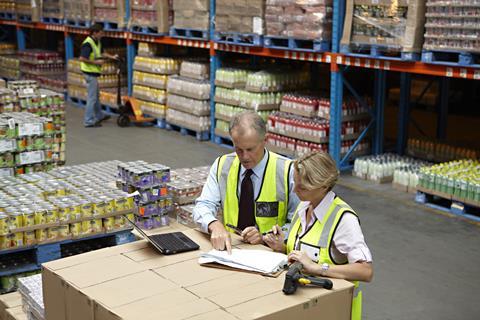
“Both supermarkets and suppliers have been shielding the shopper from the full impact of inflation,” says Black. “The reason they’ve done this is because it has been in their interests to do so given the inflationary pressures on consumers.”
In total, just 17 of the Top 150 grew both turnover and margin in their most recent financial year. And the fortunes of own-label suppliers illustrates the nature of the challenge.
One of the starkest effects of the inflationary wave has been a large-scale shift of volumes into private label – involving a consumer shift towards private label-dominated discounters Aldi and Lidl as well as the tiered own label ranges of traditional supermarkets.
Charles Hall, head of research at Peel Hunt, notes: “UK consumers were definitely under pressure and reducing both their basket size and focussing on products that can fit within a set budget.”
As a result, own-label sales growth outstripped branded growth by 10.4% to 6.2% in 2022. Own-label growth was even more stark among players with sales over £500m, which grew at 13.4% – compared with just 4.7% for similar-sized branded players.
However, this growth came at a price, with margins for own-label suppliers more than halving from 3.7% to just 1.8%. Even headline profits were down 3.5% in the period in addition to the margin shrinkage.
Five top performers
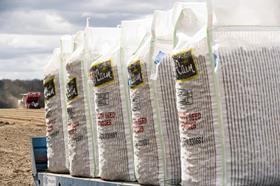
McCain
Sales: £596m +13.1%
Operating margin: 12.3% +2.7ppts
A £170m-plus investment at McCain’s Scarborough facility, the December 2021 acquisition of a stake in fast-growing frozen food player Strong Roots and the launch of The Simply Root brand to focus on vegan sauces and dips to accompany its ranges has helped potato giant McCain’s UK arm achieve double-digit top-line growth and improve profit margins, despite ongoing problems in the potato growing sector.
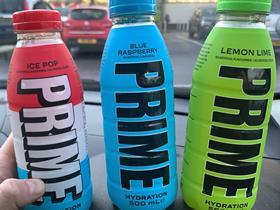
Refresco
Sales: £353m +14.4%
Operating margin: 5.9% +2.6ppts
Carbonated drinks canner Refresco’s hybrid model has enabled it to tap both own label demand and lucrative new branded contracts, including insurgent energy drink Prime Hydration to drive double-digit growth and margin improvement, amid a broader outperformance of the sports and energy drinks segment. It also invested in marketing its own Old Jamaica brand.
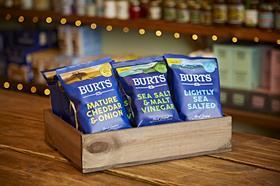
Kolak Snack Foods
Sales: £233m +27.6%
Operating margin: 7% +1.1ppts
The savoury snacks player’s acquisition of premium snacks brand Burts has helped grow sales and improve the margin mix, while also neatly complementing its strength as an own-label operator, where it has enjoyed a significant boost from customers switching from national brands amid the cost of living crisis, as well as the rise of ethnic snacking. The group has also invested in customer service to solidify customer relationships.
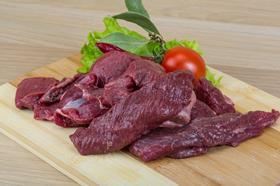
Dovecote Park
Sales: £221m +12.9%
Operating margin: 1.6% +0.7ppts
Despite pressures on customer spend, meat player Dovecote has benefitted from its premium proposition as it leveraged a strong relationship with Waitrose. Its “restaurant-quality” beef (and capacity supply constraints) have enabled it to maintain strong pricing and mitigate rapidly rising cost inputs in feed, fuel and fertiliser, while Dovecote was also helped by the recovery of food service post-Covid, enabling it to increase volumes across all channels.
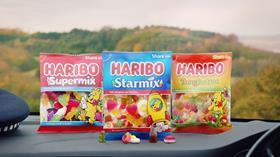
Haribo
Sales: £218m +17.2%
Operating margin: 14.3% +3.7ppts
A £22m investment in Haribo UK’s Castleford factory and higher marketing spend has helped navigate the regulatory threat of HFSS, with a rebound in on-the-go sales also boosting sales, while increased emphasis on digital marketing and its first experiential marketing campaign helped drive brand awareness. Overall sub brands grew 20% in the period due to the success of these marketing campaigns.
“Grocers have leant more on their own label partners to deliver value to the end consumer and these suppliers want to partner with grocers through this difficult period, which has meant proportionately less pricing has been pushed through,” OC&C’s Patel says.
Despite open-book pricing, Hall notes own-label players lack the flexibility to switch pack sizes and formats or reduce advertising and promotion so have fewer levers to manage inflation, while the nature of private label contracts with retailers mean there can be a longer lead time on negotiations. “The reality is branded suppliers are the price driver,” he says.
While this shift to own label suits the retailers, OC&C global managing partner Will Hayllar believes “the historically low margin levels aren’t sustainable for businesses to be able to invest in the future and deliver good products to consumers.”
Black agrees: “If supermarkets want access to supply, they are going to have to start paying for it.” He highlights the closure of a number of UK own-label manufacturing facilities in recent months by key industry players as supply chain pressures have intensified. “For private label we should be looking at this being the nadir of the margin squeeze, otherwise more capacity will come out, which will make retailers more dependent on imported goods.”
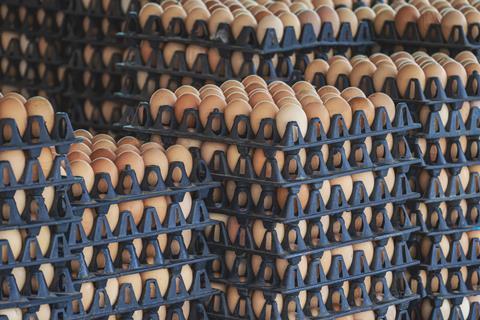
Brand owners losing volume
The outlook for major brand owners is no less fraught. While some have been able to recover more of their costs more quickly, says former Nestlé UK & Ireland CEO Fiona Kendrick, “stalling or declining volumes” – as reported by Nestlé, Unilever, Kraft Heinz and Coca-Cola among others in recent weeks – “should be a major concern. Volume declines typically translate into loss of brand share,” and without “increasing volumes again,” she notes, “it will be impossible to protect margin”.
At 9.7% smaller branded players are growing at more than double the 4.7% rate of bigger branded rivals. Little Moons CEO Mike Hedges believes multinationals have “taken a bath on volumes” to protect margins, with their ability to push through CPIs aided by “the £5m overriders their retailer customers are so reliant on. We’ve not put through anywhere like the price increases our competitors have.”
Hall adds that the larger branded players have “a greater number of levers” at their disposal in terms of promotions and advertising spend to turn the dial on margin and can push through prices faster than other market players.
Similarly larger brands have the pricing power that smaller brands lack, who have been more reluctant to push large-scale pricing through and damage volumes and threaten their vital shelf-space.
The fact that smaller players like Little Moons have enjoyed strong growth reflects “obvious qualities like fleetness of foot” though he also points out “how hard we work to empower our teams”.
And Patel also notes that smaller there is still evidence that even in the current cost of living crisis, shoppers are still willing to pay for affordable luxuries where they can justify the additional expense, which is typically an area growth brands play in more than their mass-market larger category competitors.
However, the resultant loss in big branded market share is also an unsustainable position, says Black. “Market share and volume losses are now starting to cap margin capabilities for these brands. So they are having to discount and use promotions more to support volumes.”
Additionally, as macro inflation eases, retailers are likely to become more hostile to further price increases from brands, despite cost inflation remaining in the system. “There is now a very clear emphasis on being price competitive,” Hall says.
“You are no longer going to be able to improve margins through price, which means the only way is by growing volumes.”
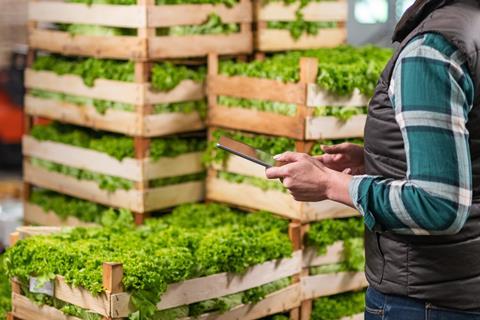
Cost price increase recoveries by hook or by crook
However, with input inflation not fully passed on last year, and further costs in the pipeline, suppliers are sure to require a further measure of price recovery argues Hayllar. “By hook or by crook we would expect margin will have to rebound over the next few years so businesses can reinvest.”
One reason for investment is increased labour costs, which will continue to rise via the national living wage increases. Energy costs have also ticked up as oil providers ration supply and instability grows in the Middle East. And commodities including sugar and cocoa continue to rise while environmental issues threaten the supply of fruit, veg and many crops.
An additional issue for brands in terms of volume recovery is that the shift to own label looks far from temporary. However, Tata Consumer Products UK & Ireland head David Atkinson has already identified a consumer shift away from pure price.
“Consumers are searching for value in any shape or form they can find,” he says, pointing to strong sales of its big boxes of tea bags, while others prioritise small packs to preserve cash as wages are stretched.
“Supermarkets are starting to focus back on quality,” he says. “If you just focus on price alone, you get something that’s just about good enough. But a focus on value means also focusing on taste, quality and other factors consumers still want.”
There are also reasons for structural optimism. First, the ticking labour timebomb appeared to slow last year, with improvements in labour productivity (staff costs as a percentage of turnover fell to 13.7% from 14.1%), and revenue per employee (up 8%) rising ahead of staff costs (up 3%).
Patel suggests, while this is partly indicative of lower volumes for some, it also reflects a genuine efficiency gain and a decline in manufacturing vacancies since its peak in 2021 and early 2022.
Second, revenues outside the UK continue to grow strongly. Global sales rose 9.8% (excluding exceptionals) compared to 5.1% domestically, with the proportion of international sales rising to 18.1% from 17.5%.
This is perhaps reflective of the relative weakness of the UK consumer environment and these sales are largely from foreign-based business arms rather than conventional exports, but it does point to continued global demand for UK food and drink brands.
Finally, there has been an uptick in capital expenditure, despite the obvious margin challenges, after two weak years in 2021 and 2022.
Capex as a proportion of revenues rose from 2.8% to 3.3% and by more than 25% to £2.6bn from £2.1bn at a headline level. This was largely driven by major investment into the UK from major multinational players like Kraft Heinz and Nestlé, and reflected some a catch-up in activity from Covid-affected years.
However, the scale of investment remains short of what’s needed to reinvent manufacturing capabilities and fund a step-change in labour efficiency and automation. And Patel fears the financial tightening since last year is likely to see capex fall back despite the long-term requirement for manufacturing investment.
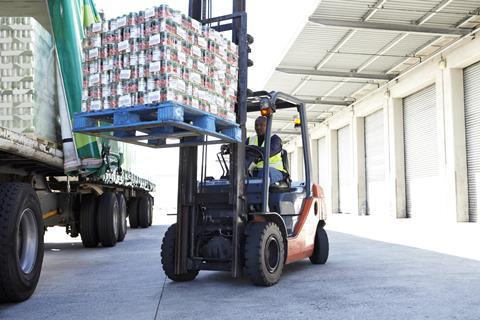
20-year planning cycles
Tata’s Atkinson notes investment will take time to have a material effect: “The investment cycle of food manufacturing is 20-plus years, so the industry is replacing kit that was put in 20 years ago. The idea the industry can automate overnight is a misunderstanding of how cycles work.”
However, he stresses the need for government support in encouraging manufacturing investment in the UK, as Tata has done at its own Stockton-on-Tees site: “The industry is focused on maximising utilisation of existing assets. It’s quite rare you see a new food factory being built and if it is it’s usually built in Europe. We need to think as an industry about we can justify building new factories and investing in our sites, otherwise we’ll be increasingly reliant on imports.”
Similarly, as suppliers step up their investment in carbon reduction, having global and national agreements and support will be vital to make further progress, says Monk, “including an energy strategy, and a 20-year one at that. And in our industry we need a strategy for food,” he adds. “Whether it’s Brexit, deglobalisation, Covid, Ukraine, there has to be a strategy.”
While the industry is out of the worst of the inflationary cycle, economic pressures remain and trading conditions are unlikely to significantly ease any time soon.
Macro inflation remains stubbornly slow to dissipate while the rise in associated interest rates will put further pressure on consumer spending and the ability for companies to borrow at competitive rates.
Nevertheless, there is the prospect of a measure of more stability and economic visibility following a number of After years of disruption from Brexit to Covid and the wave of inflation,
“The challenge of uncertainty is no-one really knows what to base decisions on and that constrains investment and strategic decision making,” Hayllar says. “Even if there is acceptance that interests rates will be high and consumers will be squeezed for a while, some level of stability can give companies the basis to make decisions and get on with things.”
But Kendrick stresses the importance of taking direct action. Rather than waiting for clarity about the future, suppliers must take stock using “up to date data, not historical evidence”, so you fully “understand changes in behaviours and can act with agility and speed”.
Businesses will also need to take a good, hard look at their ranges “and their costs – SKU by SKU,” adds Kendrick – and adapt accordingly, so innovation and pricing and pack architecture to appeal to changed shopper priorities works on both sides.
In other words, as Monk says, while conditions are “the most challenging in my 50 years in business… if you work really hard and focus on resolving those challenges you can survive and thrive”.
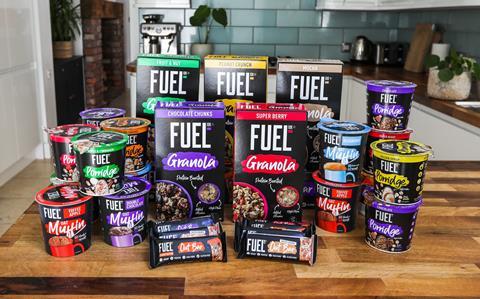
M&A buoyant despite rising interest rates
The UK food and drink suppliers shook off spiking interest rates and economic uncertainty to have the busiest year for M&A since the 2016 Brexit vote.
In total there were 35 M&A transactions in 2022, up from 24 in 2021 and 13 in 2021. And this robust activity continued in the first half of 2023, with OC&C recording another 37 deals in the year to date and 41 over the past 12 months.
However, the story behind the numbers is not quite so positive.
First, the growth in deal numbers has hidden an overall decline in deal value as players shied away from major deals, while many acquisitions have been for minority stakes rather than outright buyouts. OC&C found the implied equity value of declared deals fell 27% from £88m in 2022 to £64m so far in 2023.
Second, dealmaking has slowed again in 2023, with 17 deals in the first quarter slowing to just four by the third quarter.
These factors are partly explained by the significantly higher cost of debt financing, which has depressed valuations among private equity firms.
“If you are a PE firm and you have grown used to borrowing money at 5%, and it’s risen to 12%, that clearly adversely impacts how much you can pay for a business,” points out Shaun Browne, MD of Houlihan Lokey’s consumer, food and retail group.
But the lack of visibility around future earnings, caused by economic and geopolitical uncertainty has also been a constraining factor for private equity. As Nick Field, CEO of The Compleat Food Group notes, while “the cost of debt has gone up, private equity has operated with higher interest rates before”.
“These bigger partners aren’t choosing to invest, but they’ve all raised funds, so they’re all sitting on monies that will need to be invested at some point. Even if the cost of debt does not come down, confidence and certainty will change the mindset and see investment open up again, but it will clearly impact the market as there’s not as many people out there buying.”
However, there is a belief that slowing inflation and reduced instability will improve the optimism about improved prospects for deal activity in 2024.
Browne notes hope for a rebound in 2024 is supported by a peaking of interest rates and “undoubted pent-up demand among private equity to deploy capital”.
For the time being increased rates of borrowing puts trade buyers in the driving seat to do deals. While Q3 was quieter than hoped, there has been an uptick of activity already in Q4, with AG Barr acquiring soft drinks brand Rio and Premier Foods (21) this week snapping up Fuel10K.
But “there are good food and drink businesses out there that need scaling up and there is still a very powerful investment case behind those,” says OC&C’s Patel. “Meanwhile large businesses will increasingly think about their portfolios, whether that’s divesting or investing in growth, to help their business be fit for the future.”







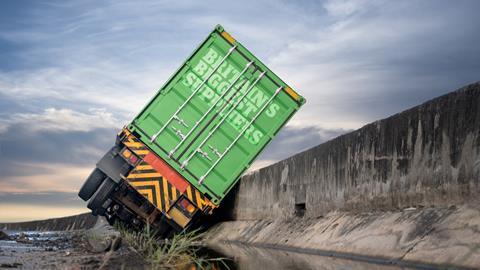

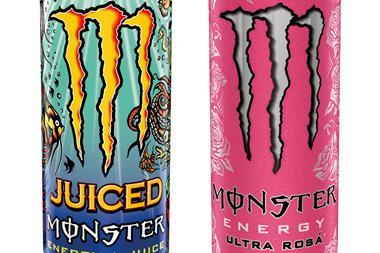
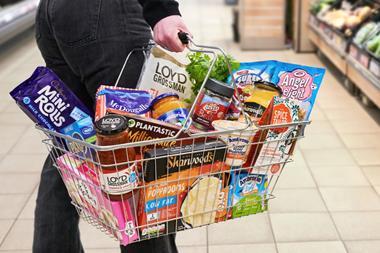
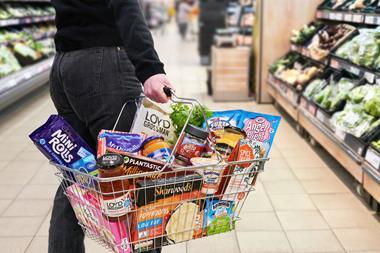
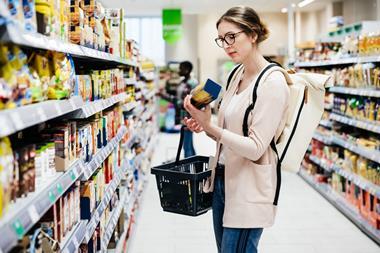
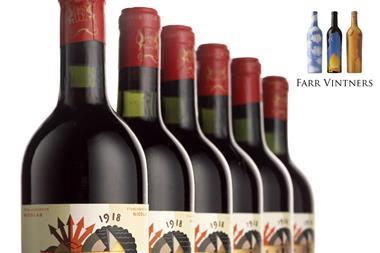






No comments yet